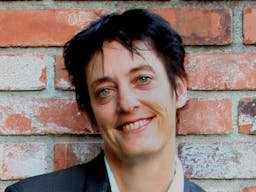Ray of hope for 5,000 HIV+ people
Jan 21, 2015
Story
hello all - a wonderful bit of news from India, where so many positive people are still dying due to lack of access to first line therapy, but also from AIDS when there are no 'second-line' or salvage HIV drugs to treat resistant cases. -Anne-christine
Ray of hope for 5,000 HIV+ people
22 Nov 2007, 0023 hrs IST, Kounteya Sinha,TNN
NEW DELHI: Nearly 5,000 HIV positive patients in India, who were
facing imminent death because they had become resistant to the first-
line Anti-Retroviral Therapy (ART) - the only known treatment that
suppresses the HIV virus - have good news coming their way. For,
India has finally decided to roll out the second-line ART from
January 2008.
The announcement will be made by health minister A Ramadoss on World
Aids Day on December 1.
TOI has learnt that two centres - Mumbai's J J Hospital and Chennai's
Tambaram ART centre - will roll out the treatment from January.
Maulana Azad Medical College (Delhi), PGI (Chandigarh) and ART
centres in Kolkata, Manipur and Nagaland will introduce it by April
2008. Nearly 3,000 patients, who have become resistant to first-line
therapy, will be put on second-line by December 2008.
Ten doctors from these centres are being sent to Thailand to study
operational issues relating to second-line therapy in mid-December.
At present, the National Aids Control Programme only provides free
first-line drugs to over 1.05 lakh HIV patients in its 127 ART
centres. Naco estimates that at least 3% of these patients have
become resistant to first-line drugs, thanks to poor adherence to the
treatment regimen. If not put on second-line immediately, most of
these patients would die within a few years. Health secretary Naresh
Dayal said: "We had planned to introduce second-line treatment only
after one lakh HIV patients were put on first-line drugs. Now that we
have crossed that mark, second-line will be introduced in January in
a controlled manner. Only those patients, who have been on first-line
drugs in Naco's ART centres and have become resistant, will be
eligible for second-line. "
Dayal said UNITAID, an international drug purchasing facility, has
offered to donate the drugs to India for the first two years. Naco
will then tie up with India's generic drug makers to provide them. A
health ministry official said: "Ramadoss is yet to decide whether we
will accept UNITAID's donation or tie up with pharma companies from
the start itself." Under first-line therapy, patients had to consume
two tablets a day. When on second-line, the number will increase to
almost 10 with more side-effects.
kounteya.sinha@
<http://in.f84.mail.yahoo.com/ym/Compose?To=kounteya.sinha%40timesgroup.
com> timesgroup. com
http://timesofindia.indiatimes.com/India/Ray_of_hope_for_5000_HIV_peop
http://timesofindia .indiatimes.com/India/ Ray_of_hope_ for_5000_
HIV_peop
le/articleshow/ 2560312.cms
http://timesofindia.indiatimes.com/India/Ray_of_hope_for_5000_HIV_peop
http://timesofindia.indiatimes.com/India/Ray_of_hope_for_5000_HIV_peop
http://timesofindia.indiatimes.com/India/Ray_of_hope_for_5000_HIV_peop




